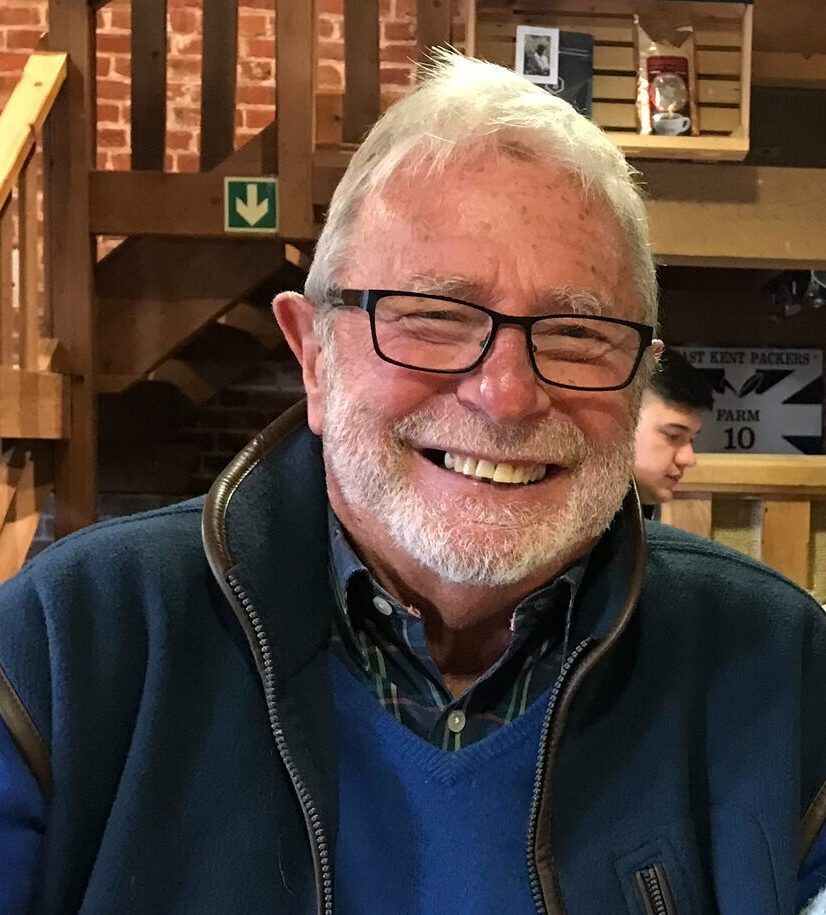John Michael Spencer Gurney was born in Aldershot on November 8 1938. Although both parents came from Greenwich, his father was in the army, so they moved many times during his childhood. After John was born, his father was posted to Netheravon in Wiltshire, where the family stayed for the duration of the war. He lived in the army camp and attended the local primary school. For John, his older brother and the other army children, Salisbury Plain became their playground. They’d often find bullets and other explosive debris – some of which was still live.
In 1948 the family was posted to Germany and John and his older sister were sent to an army boarding school far away in Wilhelmshaven, in North Germany, and would be away from their family for the whole term, with no trips home in between. The family returned to Greenwich in 1953 where John attended the South East Technical College where subjects included (alongside the usual academic subjects) bricklaying and carpentry.
Always curious and creative, John loved building things out of bits he could find; aged about 10, he made a go-cart out of a wooden box and some pram wheels and would pull his little sister around in it. And, as a teenager, he made a bicycle from scrounged parts at the local scrapyard, which he then rode from Greenwich to Winchelsea Beach to join his family on holiday.
As a schoolboy, he had reputation for working hard and won a few school prizes, usually books. He had a Saturday job as a delivery boy for the local greengrocer and later on, he worked on a building site in the school holidays as a bricklayer. Whilst still at school, he joined the Curlew Rowing Club in Greenwich where he eventually became Captain of the Club, a position he held for many years.
At 18, he attended the Regent Street Poly where he studied to be a building surveyor. As a student, he bought an old motorbike on which he collided with a car in a near-fatal accident and spent many weeks in St Thomas’ hospital recovering from a broken leg. Once out of hospital, he restored two cars, first a Singer, then his beloved Bristol. He also built a wooden dinghy from scratch, shaping the wooden panels with steam from kettles heated on a paraffin lamp.
It was also whilst at Regent Street that he became political, attending protest marches in central London, demanding social justice for all and championing pacifism. Later, whilst living in Rye, he was still known to entertain lively political discussion with his neighbours, always with a smile, and usually with his Labour Party membership card close at hand.
Once qualified as a building surveyor, he worked for a few years for Pearl Assurance then settled at a Lewisham firm, Stocker and Roberts, where he became senior partner. He married in the 1960s and had 4 children: Susie, Matthew, Philippa and Naomi. Having spent a few years cramming the family into a VW camper van, he then responded to the call of the sea and bought a sailing boat. There followed over 50 years of sailing around the English coast and the continent.
When his first marriage ended, John moved to Lewisham, restoring a house just a few doors down from his office making his commute to work just a short stroll. In 1988 he met Katie. They were both members of the same Samaritan branch in New Cross. When the government announced that something needed to be done about the high suicide rate in prisons, John took up the challenge and organised the first group of Samaritans to go regularly into Brixton Prison. He then advised and assisted other London Samaritan branches in setting up their own teams for the prisons on their patch.
In 1990, John and Katie bought the house in Rye. In 1994 Holly was born, and in 1995 John retired and Rye became home. Never able to rest when a job needed doing, John was soon the go-to person for neighbours and friends who needed something fixing in their homes. The phone would ring, he and his green bag of tools would be out of the door, and usually a glass or two would be shared when the work was done. John’s other loves included art, opera, model boat-building, jam and marmalade making, old buildings, long-distance walking and Joan Baez. He was also an active and enthusiastic member of the Rye Quaker meeting, contributing to their discussions and taking on treasurer duties.
During his time in Rye he contributed to the town as: chair of governors of Tilling Green School; volunteer classroom assistant at Freda Gardham; RNLI volunteer; calligrapher for certificates from the Conservation Society; volunteer bus driver for the Rye and District Community bus; town Father Christmas; food bank volunteer; bellringer.
In St Mary’s Church, he maintained the bells and the clock (for which he oversaw the restoration in 2012) and the boiler, as well as being the church surveyor. There aren’t many parts of St Mary’s which don’t feature his handiwork.
John is missed hugely by his wife Katie, his four surviving children – Susie having sadly died less than 2 years ago, his nine grandchildren, of whom he was incredibly proud, and his many friends.
John died on the May 7 2025 and a funeral and memorial for John was held in St Mary’s Rye on June 10.
Image Credits: Philippa Elliott .




A beautiful picture and beautifully written article on John’s beautiful life.. Tell of how he helped so many people throughout his life. A life well lived..
Thank you for sharing.
I will remember the last time I saw and spoke to John a few days before. Laughing and joking out side his garden.